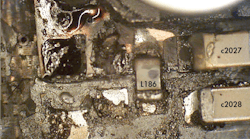How Not to Break your Network Analyzer
Network analyzers are one of the core instruments used in RF/microwave device development, characterization, and verification. As these instruments are necessarily very sensitive machines, they are prone to mechanical and electrical damage if improperly handled. In an application note by Keysight Technologies, tips for avoiding long repair cycles or costly equipment replacement requisitions are suggested.
Ensuring proper electrical power and grounding is essential for network analyzer operation. If the machine is improperly grounded, charge could build, injuring the user or damaging machine. The note reminds that these instruments tend to be supplied with a variety of warning labels and instructions in the datasheets and manuals in order to prevent mishaps.
The ports of a network analyzer are also sensitive to electrical and RF power at the inputs. Having an understanding of the range of power the ports can handle will aid in preventing overpowering and damaging the internal measurement circuitry. Ensuring that during power cycles the instrument ports only experience the minimum safety level will also prevent startup or shutdown voltage swells or sags. The note points out that DC blocks, limiters, or external attenuators may be necessary in certain testing scenarios to avoid instrument damage.
Mechanically speaking, the RF port connectors are precision parts that can easily be damaged at the connection to the instrument body or internally. To ensure RF connector safety, proper cable handling, inspection, cleaning, and electrostatic discharge (ESD) protections are valuable. ESD is an especially important consideration when packing the equipment for relocation or shipping, as they could come into contact with electric fields outside of a protected facility.
Especially during operation, adequate ventilation in a low humidity environment will not only prevent catastrophic failure, but also increase equipment lifetime. As higher performance network analyzers are often rather large and heavy pieces of equipment full of electronic components, proper physical transport is also critical. The vibrations and jarring that regularly occur during transporting packages can easily damage a network analyzer. Therefore, proper packing materials are necessary. Finally, the note indicates that styrene pellets should never be used due to static generation and inadequate device protection.
Keysight Technologies, 1400 Fountaingrove Pkwy., Santa Rosa, CA 95403, (707) 577-5030
